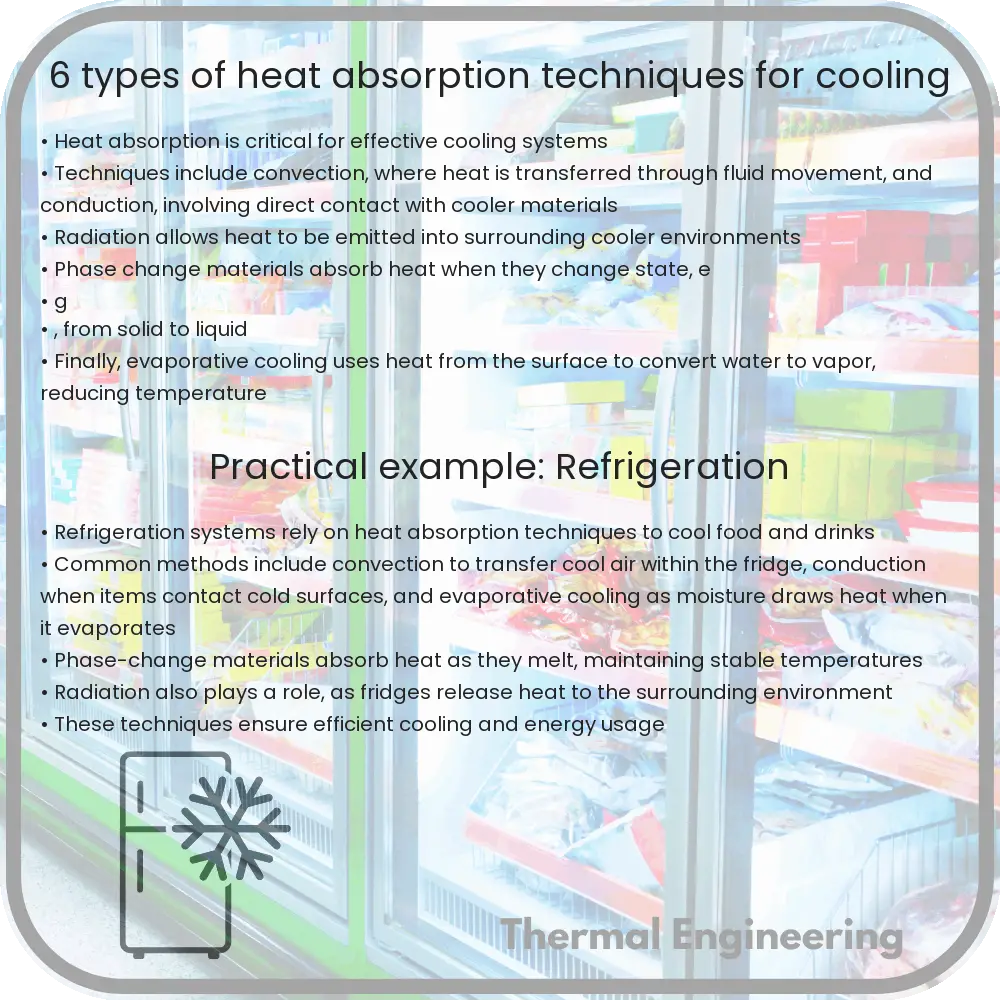Learn about six key heat absorption techniques used in cooling systems, from evaporative cooling to absorption refrigeration.

Introduction to Heat Absorption Techniques for Cooling
Cooling technologies play a critical role in various applications from industrial processes to consumer electronics and climate control in buildings. The efficiency of these technologies largely depends on how effectively they can absorb and remove heat. Here, we explore six common types of heat absorption techniques used in cooling systems.
1. Evaporation Cooling
Evaporative cooling is a natural and efficient process that absorbs heat through the evaporation of water. When water evaporates, it absorbs significant amounts of heat energy from its surroundings, thereby reducing the temperature. This principle is commonly used in cooling towers, swamp coolers, and in some air conditioning systems.
2. Refrigeration Cycle
The refrigeration cycle is a cornerstone of modern air conditioning and refrigeration. It involves a refrigerant passing through a cycle of evaporation, compression, condensation, and expansion. During the evaporation stage, the refrigerant absorbs heat from the environment, cooling it effectively. This technology is widely used in domestic and commercial refrigerators, air conditioners, and industrial chillers.
3. Heat Pipes
Heat pipes are highly efficient thermal conductors that consist of a sealed tube filled with a liquid coolant that absorbs heat by evaporating and then releases the heat by condensing. They are particularly useful in cooling high-performance electronics, such as CPUs and GPUs, where direct cooling methods can be inadequate.
4. Thermoelectric Cooling (Peltier Effect)
Thermoelectric cooling uses the Peltier effect to create a heat flux between two different types of materials. When a voltage is applied to a thermoelectric module, heat is moved from one side to the other, creating a cold side and a hot side. This method is useful for portable coolers and for cooling small electronic components that require precise temperature control.
5. Phase Change Materials (PCMs)
PCMs absorb and release heat while undergoing phase changes, typically from solid to liquid and back. By integrating PCMs in building materials, electronics, and other products, they can help in stabilizing temperature fluctuations by absorbing excess heat and releasing it when the temperature drops. This technology is increasingly used in data centers, thermal energy storage systems, and passive building cooling.
6. Absorption Refrigeration
Absorption refrigeration is a type of refrigeration that uses a heat source (e.g., solar power, natural gas, or waste heat) and a water-ammonia solution or other combinations to absorb heat, rather than electrically driven compressors. This technique is ideal for industrial applications where waste heat is available, and in low-power applications like RV refrigerators and solar-powered refrigeration systems.
Conclusion
Understanding these six heat absorption techniques provides insight into the diverse strategies engineers and scientists use to manage thermal energy. Whether through evaporation, refrigeration cycles, the innovative use of materials like PCMs, or other methods, effective heat management is fundamental across many aspects of modern technology and industry. By leveraging these various cooling techniques, we can enhance performance, increase efficiency, and drive technological advances in numerous fields.